Celebrating Raphael
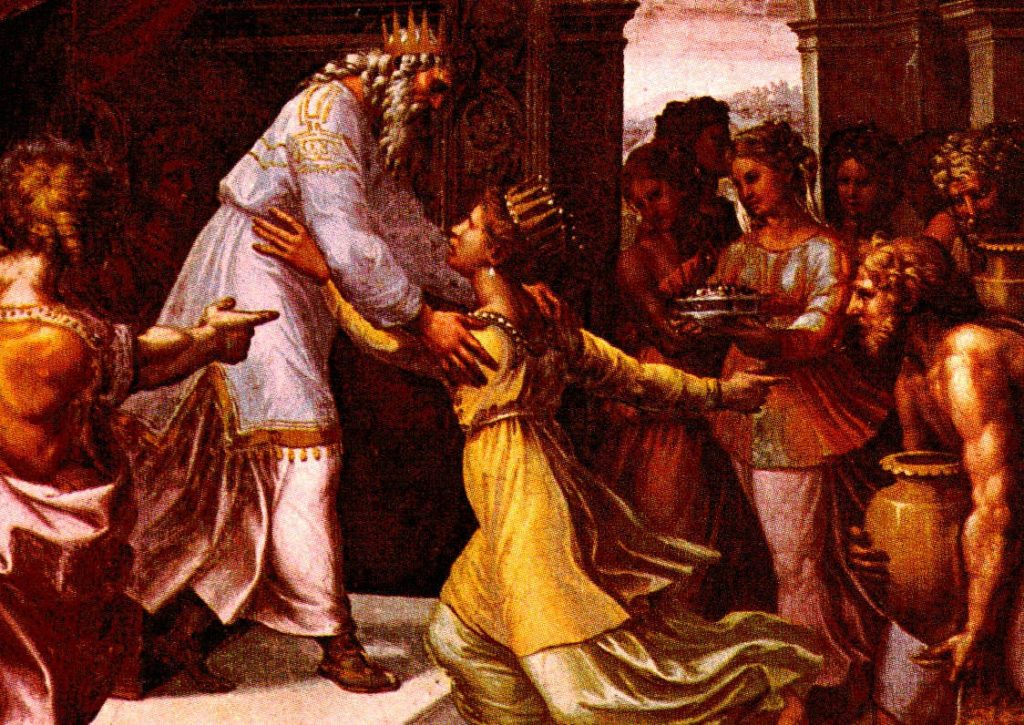
The Queen of Sheba Pays Homage to Solomon
The Apostolic Palace, Italy
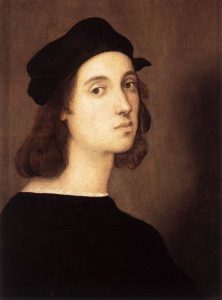
Uffizi Gallery, Florence
Known for his enchanting paintings, Raffaello Sanzio da Urbino (Raphael) was also an architect, printmaker, and skilled draftsman, a true Renaissance man. This year, 2020, marks 500 years since the death of Raphael. Celebrations to honor the artist are taking place in Rome, at the Scuderie del Quirinale museum. Open for just a few days, the largest collective exhibit of his works closed because of the COVID-19 virus and Italy’s national lockdown. The exhibition has reopened; however, as of July 1, 2020 the European Union, of which Italy is a member, is restricting United States residents travel to Europe.
Admirers may take a virtual tour at: https://youtu.be/s58gYvvNrKQ
Videos of the exhibit may be viewed at: https://www.scuderiequirinale.it/pagine/photo-video-exhibitions
The influential artist was born on April 6, 1483. He followed in his father’s, Giovanni Santi di Pietro, footsteps. Santi di Pietro worked as a painter for Federigo da Montefeltro, the Duke of Urbino. The biographer, Giorgio Vasari, in his book, Lives of the Most Excellent Painters, Sculptors, and Architects, testifies Raphael’s father arranged an internship for Raphael in the studio of the Italian painter Pietro Perugino. Raphael was working as an assistant to Perugino when his father died in 1494. Upon his father’s death, Raphael’s uncle became his legal guardian, and Raphael inherited his father’s studio.
Raphael moved on to receive training in Urbino from a court painter named Timoteo Viti and Perugino. In 1500 Raphael received his first joint commission with Evagelista da Pian di Meleto for an altarpiece dedicated to St. Nicholas of Tolentino for Andrea Baronci’s chapel in the church of St Agostino in Città di Castello. Then, in 1504, Raphael moved to Siena when he was asked by the painter Pinturicchio to make drawings for the frescos in the Libreria Piccolomini. Next, Raphael went on to Florence where he lived for the next four years.
The celebration focuses on Raphael’s time in Rome, highlighting over two-hundred masterpieces. The Scuderie del Quirinale museum gathered works throughout Italy, the Vatican museums, the Louvre, the Musée des Beaux Arts, the National Gallery of London, the Ashmolean Museum, the Prado Museum, the Albertina, and The National Gallery of Art in Washington, D.C.
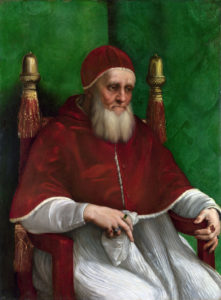
National Gallery, London
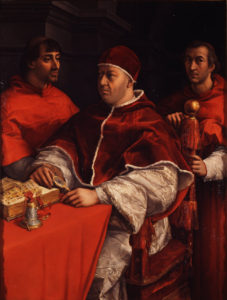
Uffizi Gallery, Florence
Pope Julius II invited Raphael to Rome where he would live for the next twelve years until his death. While in Rome, he worked for prominent figures Pope Julius II, Pope Leo X, banker Agostino Chigi, and Bramante. Raphael received a commission from Chigi for the fresco of Galatea, in his Villa Farnesina, and the design of the Chigi Chapel in the church of Santa Maria del Popolo. He also worked on the architectural design of the church of St Eligio degli Orefici. His architectural designs secured him the position of Architectural Commissioner of the new St Peter’s Basilica following Bramante’s death in 1514.
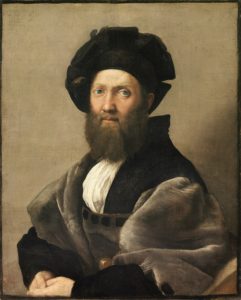
Louvre, Paris
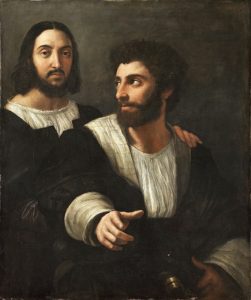
Louvre, Paris
While living in Rome, Raphael’s work reflected the perspectives of the Renaissance era, Biblical figures, and portraits of the aristocracy. Among his frescoes, Raphael designed images from the Hebrew text and New Testament known as “Raphael’s Bible” in the Loggia of the Apostolic Palace. The building was designed by Donato Bramante for Julius II and completed under Leo X. The gallery is divided into thirteen vaulted cloister bays; each bay depicts four scenes from prominent figures of the Bible.
One picture in the Loggia is among the most diverse of his works. According to Paul F. Watson, the Queen of Sheba is identified as a black woman. She traveled to Jerusalem to meet King Solomon, known for his wisdom; the Queen of Sheba questioned him. Impressed with his knowledge and answers, she has her cortège present spices, gold, and precious stones to the king. The momentous event is recorded in the Bible books 1 Kings 10, 2 Chronicles 9, and is also mentioned in the Quran. Raphael’s depiction emphasizes the Queen of Sheba’s act of respect and acknowledgment of Solomon’s wisdom.
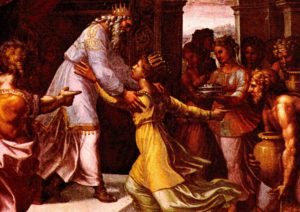
The Apostolic Palace, Italy
Travel plans to view the Scuderie del Quirinale museum exhibit honoring Raphael may have changed because of COVID-19 in 2020; still, one can celebrate through a staycation by reading more about Raphael in eBooks available at Clark College Libraries.
Raphael’s Bible a study of the Vatican Logge by Bernice F. Davidson
Raphael. Volume 1 by Eugène Müntz
Raphael. Volume 2 by Eugène Müntz


